Cat6 vs. Cat8: Which is Right for Your Office Network?
Last Updated on April 14, 2024
Imagine a workday transformed: video conferences flow effortlessly, massive files transfer in the blink of an eye, and online collaboration feels as smooth as in-person meetings. A strategic office network upgrade unlocks this potential. Ready to boost your team's efficiency and streamline workflows?
Let's explore ethernet cables and data transmission to optimize your network. This guide covers everything you need to know about your office network upgrade, including wired cabling options (Cat6 vs. Cat8) and the latest Wi-Fi technologies.
Table of Contents
Understanding Your Network Needs
Before diving into cables and speeds, the most important step is understanding what your office *actually* needs. Consider the following:
- Your Current Tools: Take stock of what your business uses daily. Are you mainly working with email, web browsing, and cloud-based productivity suites? Or do you rely on specialized software that demands large file transfers, video editing, or real-time data processing?
- Future Plans: Think ahead. Is your company expanding? Will you adopt new technologies or significantly increase your reliance on cloud services? It's crucial to anticipate how these changes will strain your current network.
Note: It's important to be honest and realistic about your network requirements to avoid potential bottlenecks and expensive upgrades in the future. Properly assessing your needs can save you from repeatedly making costly adjustments later.

Cat6 and Cat8 Ethernet: A Technical Breakdown
Ethernet cables, like Cat6 and Cat8, are the unsung heroes behind your office's wired connections. Understanding their technical differences is key to picking the right fit. Let's dive deeper:
Cat6 Cabling: The Reliable Standard
- Cat6 cables offer speeds of up to 10 Gbps (gigabits per second) at distances up to 55 meters (about 180 feet) and 1 Gbps at distances up to 100 meters (about 328 feet). This is enough for everyday office tasks, handles HD video streaming effortlessly, and is perfect for most cloud-based tools.
- Cat6's wide compatibility with existing devices and its cost-effectiveness make it the sensible choice for most businesses.
Cat8 Cabling: Specialized Powerhouse
- Cat8 is the speed monster of network cables. It supports up to 40 Gbps, but this speed is limited to shorter distances – up to 30 meters (about 100 feet).
- This makes Cat8 ideal for specific scenarios: data centers where servers must communicate at multi gigabit speed, 4K/8K video production studios, scientific or medical settings handling enormous data transfers, or anywhere extreme transmission speed is a must.
- Cat8 also boasts superior shielding compared to Cat6. This means significantly less signal disruption due to electrical interference from machinery, power lines, or other devices – important in noisy environments.
Key Takeaways:
- Speed Isn't Everything: Don't choose Cat8 based on speed alone. Unless you can realistically utilize those speeds over short distances, Cat6 will likely meet your needs.
- Shielding Matters: If your office has lots of electrical equipment that could cause network interference, Cat8's shielding can improve connection stability.
Important Note: While Cat6 and Cat8 get the most attention, Cat6a is a smart middle ground worth considering. Cat6 offers plenty of speed for most offices for everyday tasks and even handles HD video conferencing smoothly. If you anticipate needing slightly higher speeds in the next few years, Cat6a will future-proof your network without Cat8's cost.
Reserve Cat8 for specialized scenarios like data centers, high-end video production, or research labs needing high bandwidth. In some cases, fiber optic cabling might be a better choice than Cat8 for its unparalleled speeds and immunity to interference, although it would be a more expensive solution.
| Specification | Cat6 | Cat6a | Cat8 |
|---|---|---|---|
| Maximum Speed (up to) | 10 Gbps (55m), 1 Gbps (100m) | 10 Gbps (100m) | 25 Gbps (30m), 40 Gbps (30m) |
| Maximum Bandwidth | 250 MHz | 500 MHz | 2000 MHz |
| Shielding | UTP or STP | STP | STP |
| Typical Cost | Least Expensive | Middle Ground | Most Expensive |
Choosing the Right Cabling Solution for Your Office
When Cat6 is Still the Smart Choice
- If your current network bottlenecks are mainly during activities like video calls or occasional large file transfers, upgrading to Cat6 will likely provide a significant boost.
- Most offices won't reach the limit of Cat6's capacity soon, making it a future-friendly choice for moderate growth.
- Budget is always a concern, and Cat 6 offers a fantastic balance of performance and affordability.
When to Invest in Cat 8
- Specific use cases demand Cat8's capabilities: Data centers, video production with massive file sizes, or research labs needing top-tier local network speeds.
- If your office environment consistently experiences heavy electrical interference, which causes network issues, Cat8's shielding is a major advantage.
The Bulk Factor: Cat8 vs. Cat6/Cat6a
Cat8's superior shielding and speed come with a trade-off: it's significantly bulkier than Cat6 or Cat6a cables. This bulkiness has several implications when planning a network upgrade, especially for larger offices:
Installation Labor: The thicker cables can be more difficult to work with, increasing installation time and labor costs.
Cable Management: You'll need to factor in larger cable trays, j-hooks, and other support systems to handle the additional bulk of multiple Cat8 runs. This can impact the overall aesthetics and space requirements of your network setup.
Patch Panels and Connectors: Cat8 often requires specialized patch panels and connectors, adding to the material costs of the upgrade.
When Bulk Matters Most: If you're planning a large-scale office installation with hundreds of cable drops, the bulk of Cat8 becomes a critical factor. Thoroughly consider the total cost of ownership, not just the cable itself.
The Case for Cat6/Cat6a: Cat6 offers sufficient speeds for most offices for everyday applications and video conferencing. Cat6a provides a middle ground for moderate future-proofing needs. In many scenarios, these options will be more practical and cost-effective than scaling to Cat8.
Important Note: As with any network upgrade, a professional IT assessment can help you balance cable performance with costs and project-specific logistics.
Hybrid Approaches
It's not always an all-or-nothing choice! You could run Cat8 for specific high-bandwidth links (like a server to a workstation) while maintaining Cat6 for the rest of the network.
Thinking Ahead: If you anticipate a significant shift towards data-intensive applications, heavily relying on cloud services, or a large office expansion within the next few years, leaning towards Cat8 (or at least Cat6a) now can save you from another upgrade.
Important Factor: Your network upgrade shouldn't only be about the cables. Ensure your switches and other network equipment can support the speeds of your chosen cable type.

Optimizing Your Wireless Network
While wired cables create your network's foundation, a strong wireless network is crucial for modern workplaces. Let's discuss the latest Wi-Fi technologies to ensure your office isn't held back by outdated wireless:
The Rise of Wi-Fi 7
- Wi-Fi 7 (officially known as 802.11be) is the next-generation standard set to revolutionize wireless connectivity. It promises significantly faster speeds, lower latency (crucial for real-time applications), and the ability to handle many more devices without a drop in performance.
- While Wi-Fi 7 devices aren't widely available yet, they are anticipated to become mainstream in late 2024 and throughout 2025.
Excellent Current Options (Wi-Fi 6/6E)
- Wi-Fi 6 and 6E offer major benefits for today's offices. They provide faster speeds, improved network capacity, and better performance in crowded environments than older Wi-Fi standards.
- If you need an immediate boost, upgrading to Wi-Fi 6/6E is an excellent solution that doesn't require waiting for future tech to mature.
Preparing for Wi-Fi 7
- Even if you don't immediately replace your router and devices, consider Wi-Fi 7 when planning your network upgrade. Ensuring your cabling (Cat6a or, ideally, Cat8 for high-traffic areas) can handle increased speeds will let you take full advantage of Wi-Fi 7 when you decide to upgrade wireless components.
Conclusion
Upgrading your office network is an investment in productivity and future readiness. There's no one-size-fits-all answer – the right choice for your business depends on careful assessment, budget, and a bit of forecasting your future needs.
Here are some key takeaways:
- Cabling and Wireless Go Hand in Hand. A strong network needs a robust wired foundation to support the latest wireless technology.
- Don't Overspend: Cat8 is powerful, but most offices don't need its capabilities. Focus on where you'll see your budget's most significant performance gains.
- Future-Proof Within Reason: Consider your growth plans when choosing cables and Wi-Fi standards to minimize the need for frequent, disruptive upgrades.
A comprehensive network assessment by a professional can be invaluable, especially for larger or more complex office setups. However, this guide should have given you the necessary knowledge to start those conversations and make informed decisions about your office's connectivity future.
Are there any specific network challenges your office faces? Share them in the comments below!
FAQ: Office Network Upgrades with Cat6, Cat7, and Cat8
My office internet is slow. Do I automatically need Cat8?
Not necessarily. While Cat8 offers the highest speeds, most offices don't need that maximum capacity right now. Cat6 might provide a substantial boost, especially if your bottlenecks are mainly during video calls or infrequent large file transfers. Consider your current software usage and future growth plans.
Can I mix and match Cat6 and Cat8 cables?
Yes! You can use Cat8 for specific high-bandwidth connections (like server to workstation) while maintaining Cat6 for the rest of your network. Hybrid approaches can offer a cost-effective balance.
3
Cat7 is not an officially recognized standard. Stick to Cat6, Cat6a (for slightly higher speeds), or Cat8 to ensure compatibility and future-proofing.
What else should I upgrade for faster network speeds besides cable type?
Ensure your switches, routers, and other network equipment can handle the speeds of your chosen cable. If upgrading to Cat8, your devices need compatible network interface cards (NICs).
How much more expensive is Cat8 compared to Cat6?
Cat8 can be significantly more expensive than Cat6. Before investing, consider whether you can realistically utilize its extreme speeds in the near future. If not, Cat6 or Cat6a might be a more budget-friendly choice.
Are there downsides to Cat8 besides cost?
Cat8 cables are thicker and less flexible than Cat6, making installation slightly more challenging. Additionally, its maximum speed is only supported over short distances (up to 30 meters).
Does Cat8 improve my Wi-Fi speed?
Indirectly. While Cat8 boosts your wired network backbone, consider upgrading to Wi-Fi 6/6E or waiting for the widespread adoption of Wi-Fi 7 for the most significant wireless speed improvements. However, remember a strong wired network is crucial for supporting the speeds of Wi-Fi upgrades.
Do I need Cat8 or special shielding if I have a lot of electrical equipment in my office?
Cat8's superior shielding helps minimize signal interference from electrical sources. If you have frequent network issues due to interference, Cat8 could be a worthwhile investment. Cat6 with shielded (STP) cabling is also an option.
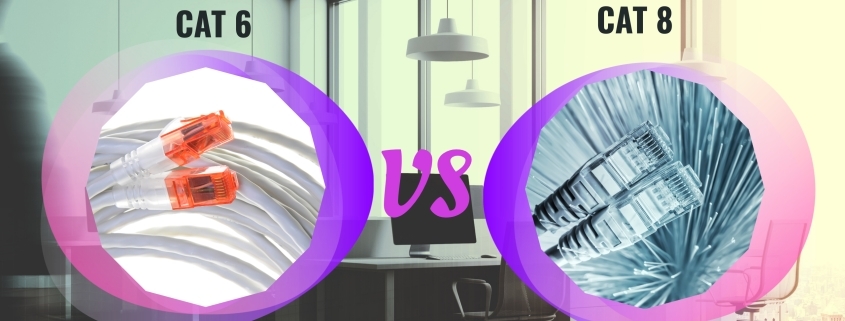
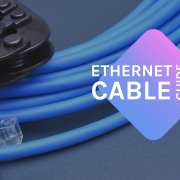

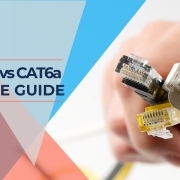
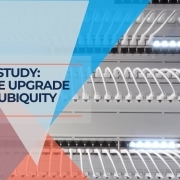

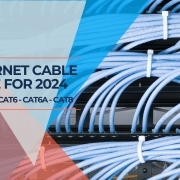



Leave a Reply
Want to join the discussion?Feel free to contribute!